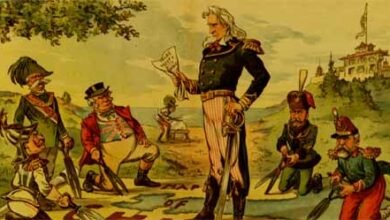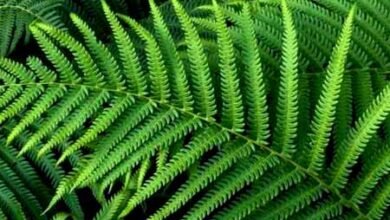
भूगोल से संबंधित-124.
|
1. पृथ्वी के वर्णन के लिए सर्वप्रथम ‘ज्योग्राफी’ शब्द का प्रयोग किसने किया था? = इरेटोस्थेनीज. 2. सर्वप्रथम किस मानचित्रकार ने प्रक्षेप में स्थानों को उनके अक्षांश व देशान्तरों के अनुसार प्रदर्शित किया था? = मेरीनस. 3. मेटरोलोजिया नामक पुस्तक की रचना किसने की? = अरस्तू. 4. भूगोल के लिए ‘ज्योग्रैफिका'(Geographica) शब्द का प्रयोग सर्वप्रथम किसने किया? = इरैटोस्थनीज. 5. उच्च तापमान के मापन हेतु किस उपकरण का प्रयोग किया जाता है? = पायरोमीटर. 6. मानचित्र में वे रेखाएँ जहाँ दाब सम हो, क्या कहलाती है? = समदाब रेखाएँ. 7. मानचित्र पर वर्षा का वितरण दिखाने के लिए किस रेखा का प्रयोग किया जाता है? = आइसोहाइट. 8. प्लेट विवर्तनिकी सिद्धान्त किस वर्ष प्रस्तुत किया गया? = वर्ष 1960. 9. ओपीसोमीटर का प्रयोग किया किसमें किया जाता है? = दूरी मापन. 10. विश्व की सबसे बड़ी मीठे जल की झील कौन सी है? = विक्टोरिया. 11. विनुफॉस्फेन जल प्रपात किस देश में स्थित है? = नॉर्वे. 12. स्टॉकहोम और गोटेनबर्ग के मध्य स्थित नहर का क्या नाम है? = गोटा. 13. हम्बोल्ट जलधारा किस तट के पास बहती है? = द. अमेरिका के पश्चिमी तट. 14. साइबेरिया क्षेत्र में समशीतोष्ण कोणधारी वन को किस नाम सेजाना जाता है? = टैगा. 15. स्प्रूस, फर तथा चीड़ मुख्य रूप से कहां पाये जाते हैं? = टैगा वनों. 16. किसी स्थान का मानक समय निर्धारित करने का आधार होता है? = प्रधान मध्यान रेखा. 17. पृथ्वी की उपरी परत में किसकी मात्र अधिक पायी जाती है? = ऑक्सीजन और सिलिकॉन. 18. पृथ्वी की सबसे उपरी परत को क्या कहते हैं? = भू – पटल (Crust). 19. भू पटल (crust) और भू प्रवाह (upper mantle) के संपर्क क्षेत्र को क्या कहते हैं? = मोहो डिसकंटीनिटी. 20. धरातल पर पाए जाने वाले लम्बे तथा संकरे पर्वतों को क्या कहा जाता है? = पर्वत कटक (ridge). 21. रिक्टर स्केल का निर्माण किसने किया था? = चार्ल्स फ्रांसिस रिक्टर. 22. सामान भूकंपीय तीव्रता वाले स्थानों को मिलाने वाली रेखा क्या कहलाती है? = सम भूकंपीय रेखा. 23. भारत को कितने भूकंपीय क्षेत्रो में विभाजित किया गया है? = पांच. 24. ज्वार भाटा के कारण समुद्री जल स्तर में उत्पन्न अंतर को क्या कहते हैं? = ज्वारीय परिसर (Tidal range). 25. विश्व में सर्वाधिक चौड़ी महाद्वीपीय मग्न तट किस महासागर में स्थित है? = अटलांटिक महासागर. 26. ‘प्लैंकटन’ का विकास कहाँ सर्वाधिक होता है? = ठंडी एवं गर्म जलधारों के मिलन स्थल. 27. सूर्य प्रकाश धरती तक पहुँचने में कितने मिनट लेता है? = 8.3 मिनट. 28. नॉर्वे र्में अर्द्धरात्रि के समय सूर्य कब दिखायी देता है? = 21 जून. 29. एक देशान्तर को पार करने में दो स्थानों के स्थानीय समय के बीच क्या अन्तर होता है? = 4 मिनट. 30. पृथ्वी के कुल द्रव्यमान का लगभग कितना प्रतिशत मेंटल (Mantle) में पाया जाता है? = 68%. ========== ========= =========== 1. Who first used the word ‘Geography’ to describe the Earth? = Eratosthenes. 2. Which cartographer first displayed the places in the projection according to their latitude and longitude? =Marinus. 3. Who composed the book Metrologia? =Aristotle. 4. Who first used the word ‘Geographica’ for geography? = Eratosthenes. 5. Which instrument is used to measure high temperature? = Pyrometer. 6. What are those lines in the map where the pressure is equal called? = isobar lines. 7. Which line is used to show the distribution of rainfall on the map? = Isohyets. 8. In which year was the theory of plate tectonics presented? = The year 1960. 9. What is opisometer used for? = Distance measurement. 10. Which is the largest freshwater lake in the world? = Victoria. 11. In which country is Vinuposfen Falls located? = Norway. 12. What is the name of the canal located between Stockholm and Gothenburg? = Gota. 13. Near which coast does the Humboldt Current flow? = d. West coast of America. 14. By what name is the temperate deciduous forest known in the Siberia region? =Taiga. 15. Where are spruce, fir and pine mainly found? = Taiga forests. 16. What is the basis for determining the standard time of a place? = Principal meridian. 17. Which element is found in abundance in the upper layer of the earth? = Oxygen and silicon. 18. What is the uppermost layer of the earth called? = Crust. 19. What is the contact area between the earth’s crust and upper mantle called? = Moho discontinuity. 20. What are the long and narrow mountains found on the surface called? = mountain ridge. 21. Who created the Richter scale? = Charles Francis Richter. 22. What are the line joining places with equal seismic intensity called? = Iso-seismal line. 23. India is divided into how many seismic zones? = five. 24. What is the difference in sea water level caused by tides called? = Tidal range. 25. In which ocean is the world’s widest continental submerged coast located? = Atlantic Ocean. 26. Where does ‘Plankton’ grow the most? = Meeting place of cold and hot water streams. 27. How many minutes does sunlight take to reach the earth? = 8.3 minutes. 28. When does the sun appear at midnight in Norway? = 21st June. 29. What is the difference between the local time of two places while crossing a longitude? = 4 minutes. 30. Approximately what percentage of the Earth’s total mass is found in the Mantle? = 68%.
|





